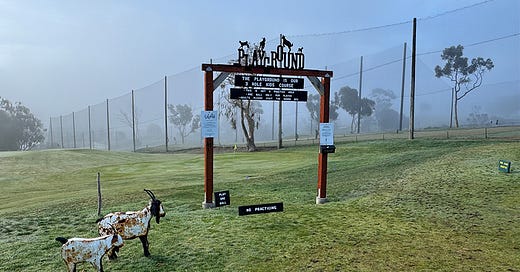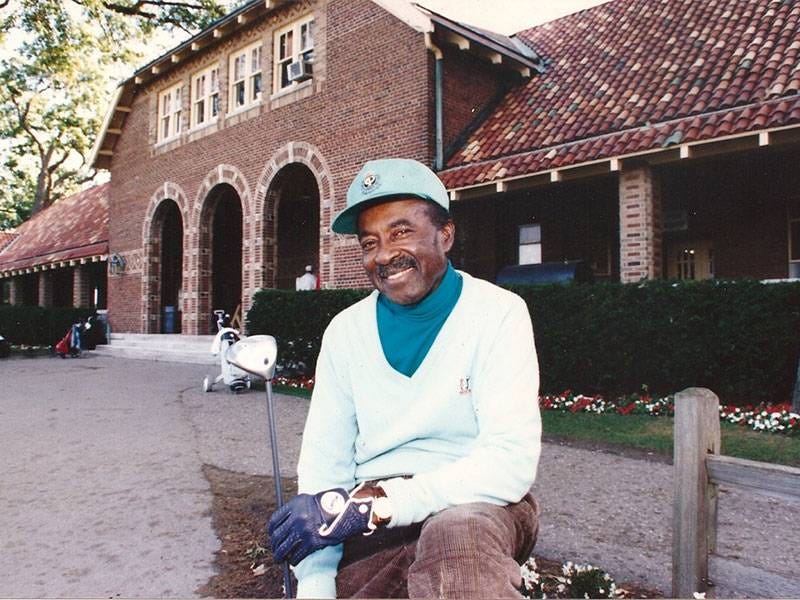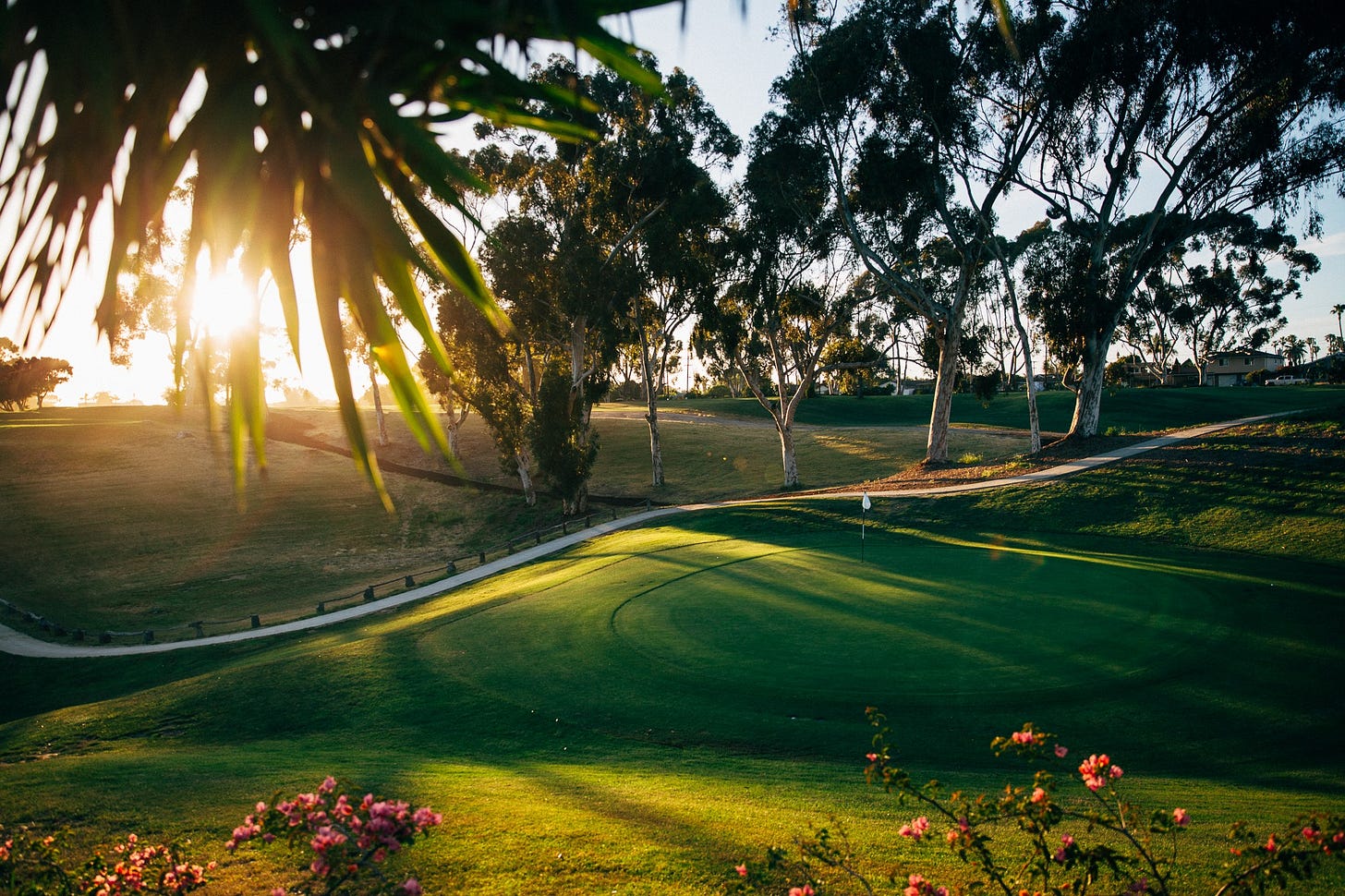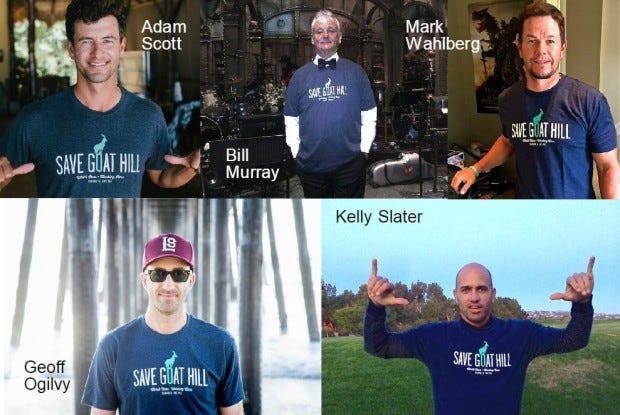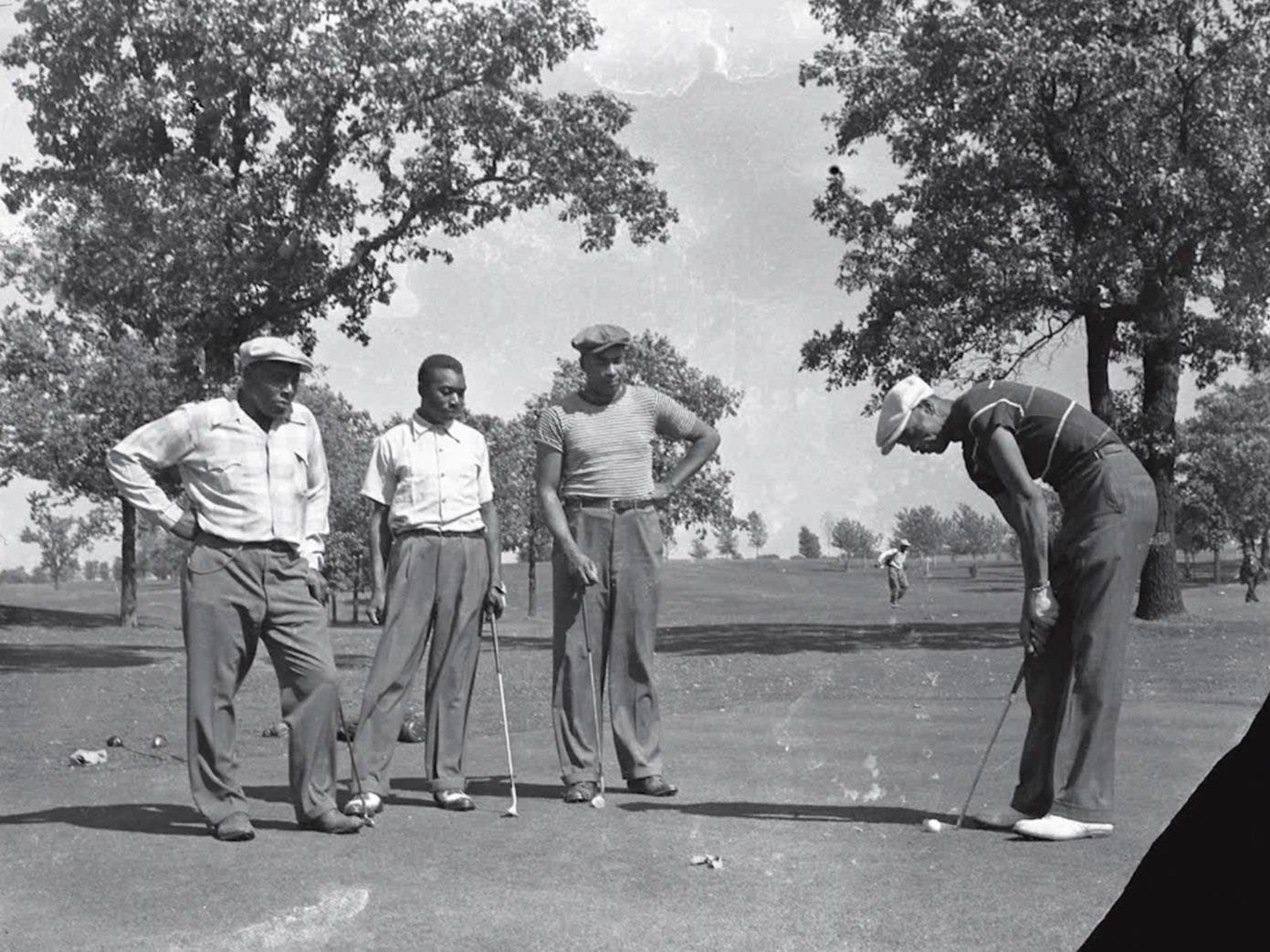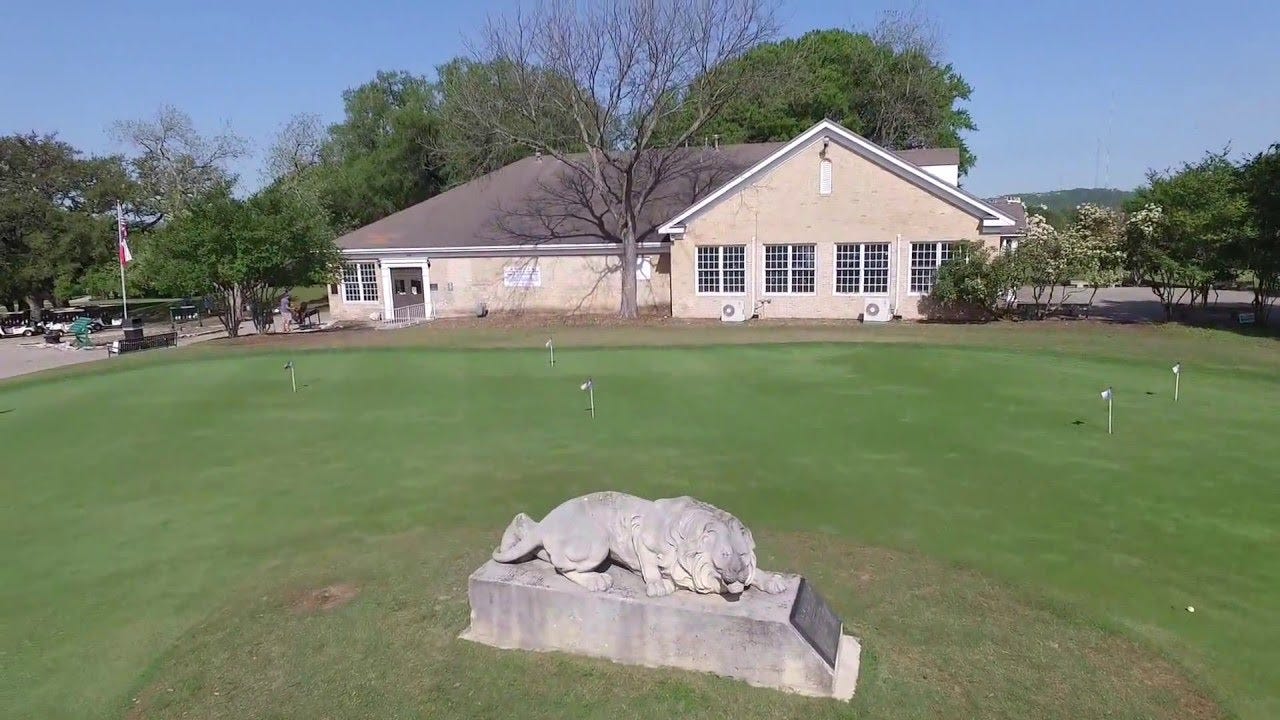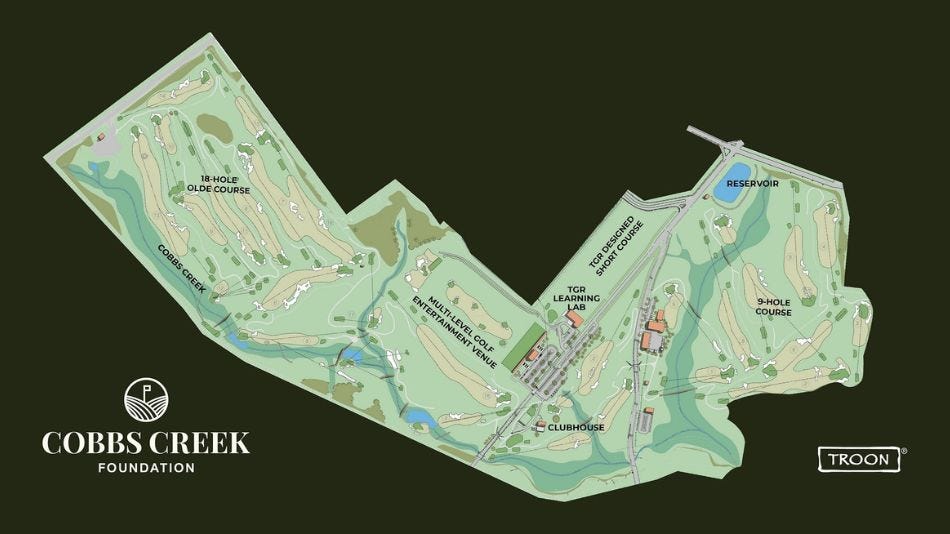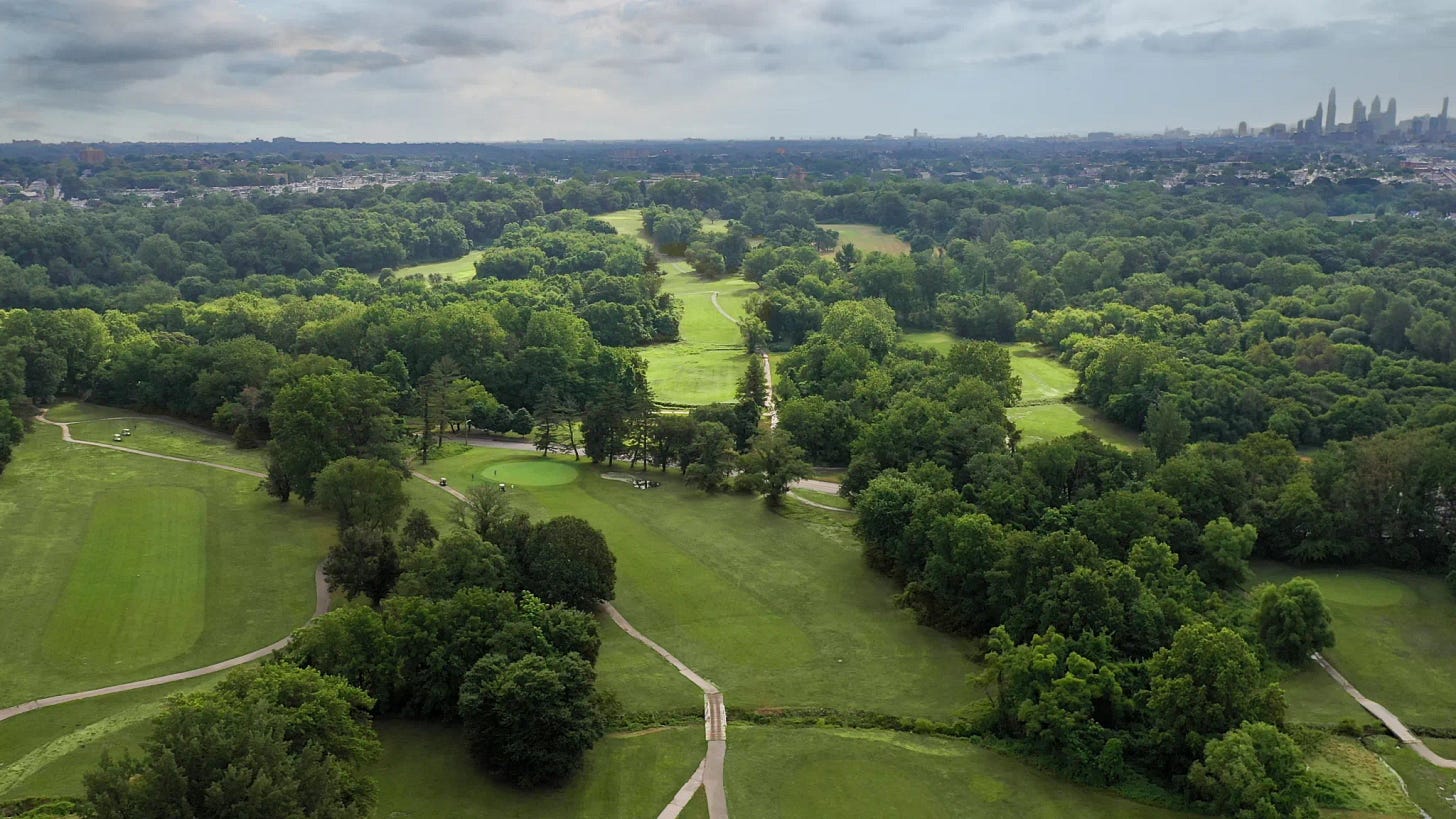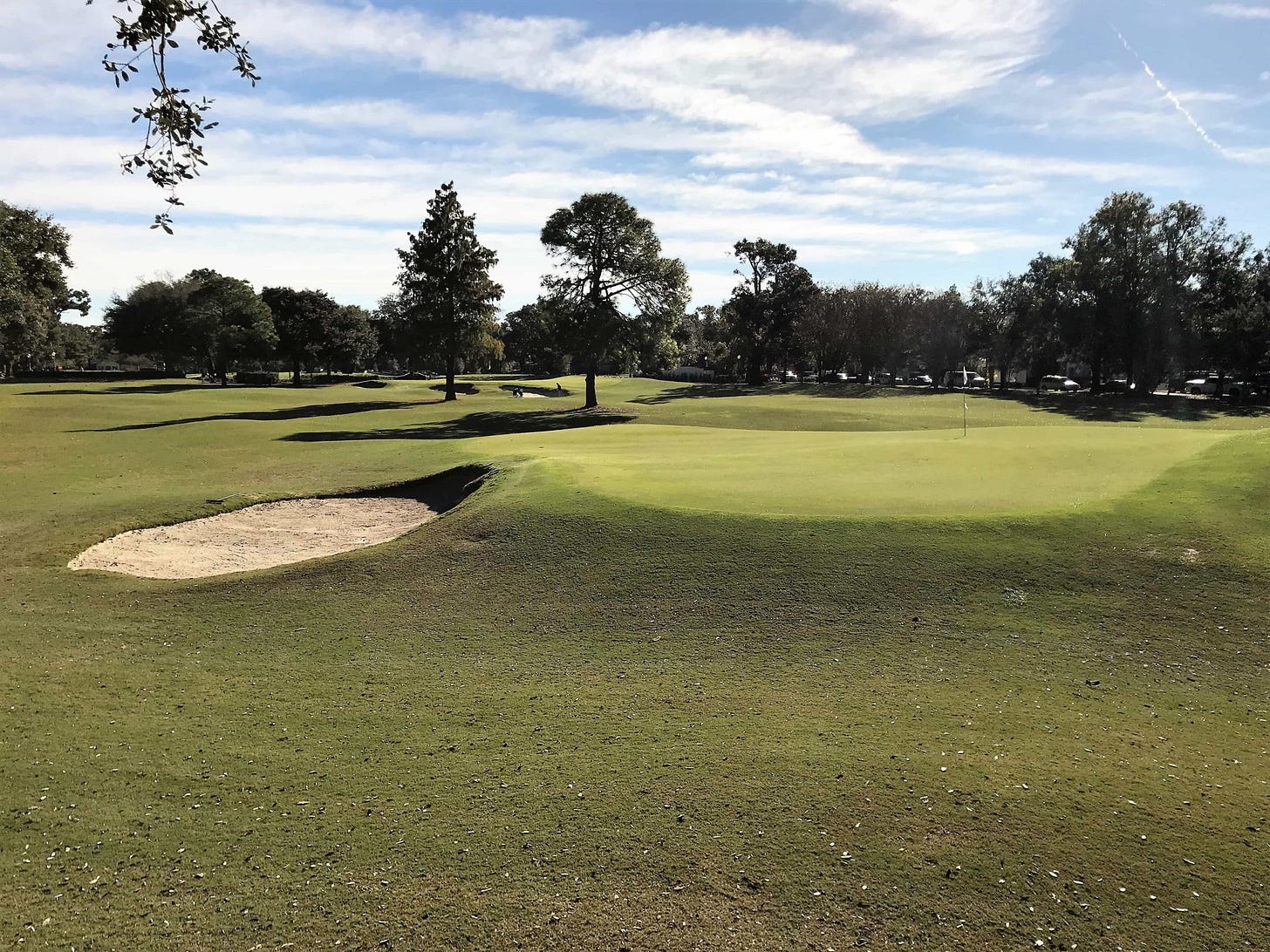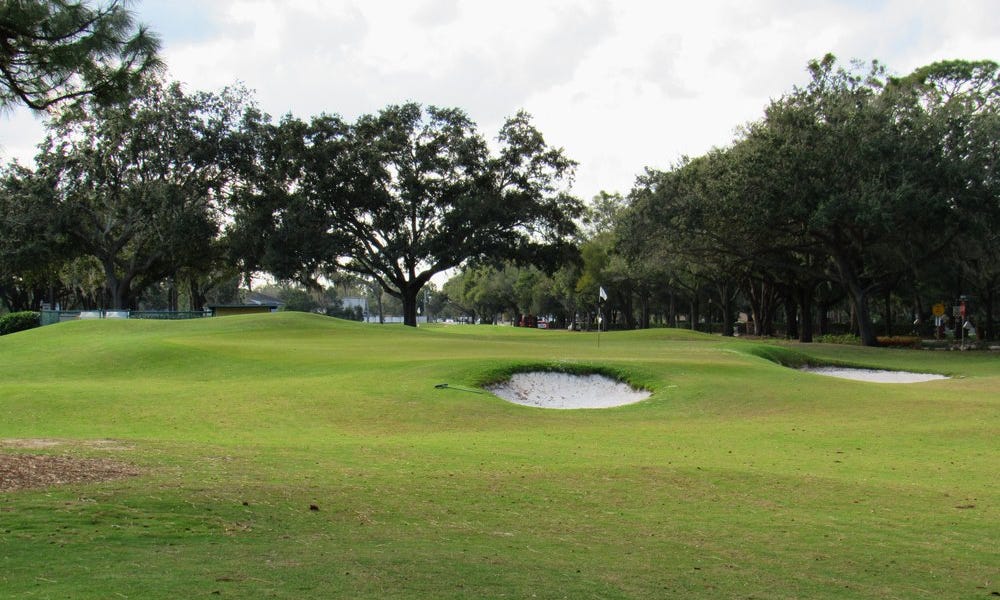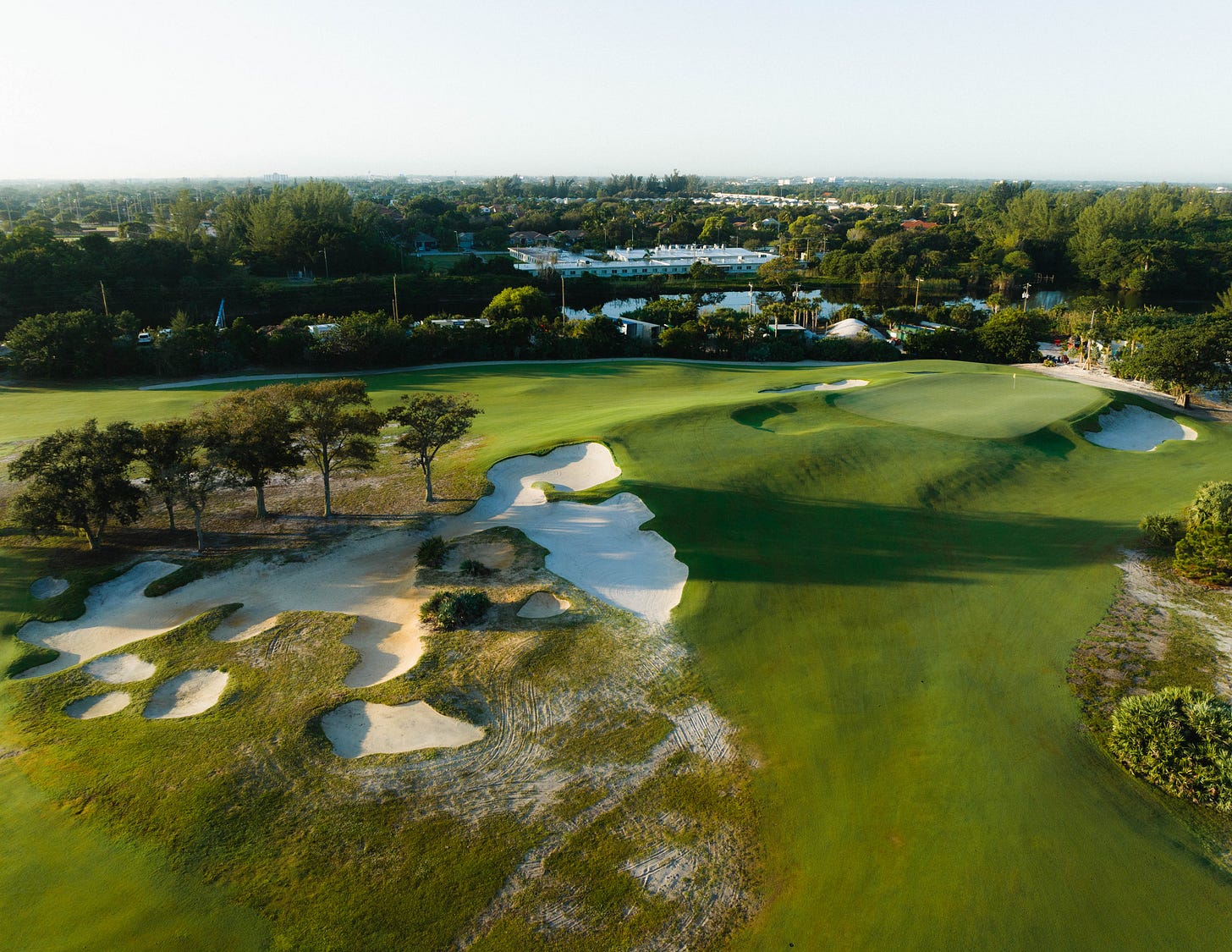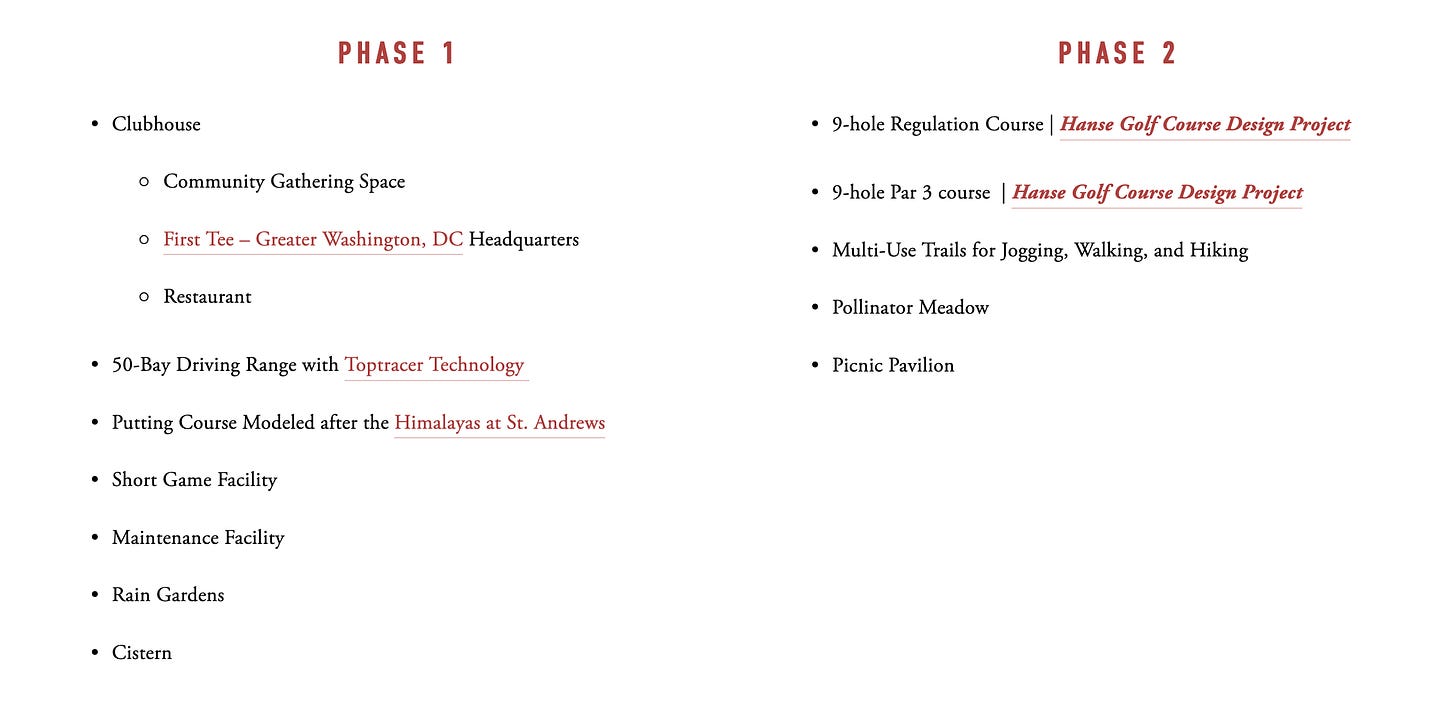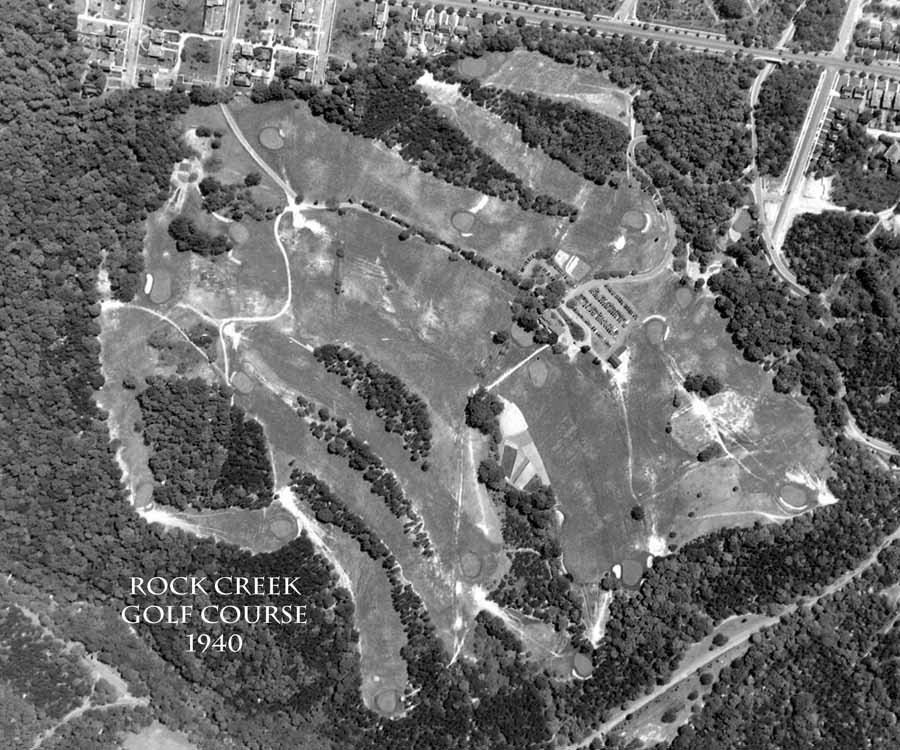Detroit Golf Series, Part 3
What lessons can Detroit learn from muni golf developments nationwide?
In part 2 of the Detroit Series, we looked at the history of Detroit’s three remaining municipal golf courses, including their recent brush with closure.
Detroit Golf Series, Part 2
In part 1 of the Detroit Golf Series, I looked at the rerouting of Rackham GC, and what a potential restoration of the original Donald Ross routing would look like on the existing property. That project was essentially the impetus for starting this series, but there are a number of different angles at which to look at the entirety of city golf in Detroit.
Detroit’s history of financial troubles has certainly created difficulty for its golf properties, and put their futures in question. Municipal golf has faced challenges all over the country, however, and Detroit is far from the first to have city courses close. Rather than despair, it may be more productive to look at the positive developments from the past decade or so, as more communities and forward-thinking leaders have embraced the possibilities for municipal golf, breaking free from traditional barriers and creating properties that enhance their neighborhoods.
Some of these courses might even, dare I say, grow the game?
All of the following projects caught my eye in one way or the other. I could go into detail on each one, but there simply isn’t enough room here. I would rather try to highlight the lessons from each - what the threats were, and what was done to turn the fortunes of each property around. But by all means, read the stories of these courses if you have a chance; I’ll provide a couple links for each one.
Goat Hill Park
Originally the Center City Golf Course, a 9-holer built in 1952, Goat Hill Park came to life in it’s current form as a redesigned 18-hole short course in the early 90’s. By the early 2010s, though, it had fallen under major disrepair, and was under consideration for redevelopment. Perhaps as a saving grace, the course could not be redeveloped without the consent of a public vote, thanks to a 1980s designation of the property by the previous owners as “public land”, according to the Goat Hill Park history page.
Goat Hill Park shares a hometown, Oceanside, CA, with the golf apparel company Linksoul, and was fortunate to find a benefactor in Linksoul founder John Ashworth, along with co-founder Geoff Cunningham.
“We didn’t have a good feeling about this,” said Ashworth. “Developers were coming up here. It was kind of on a lark that we thought, ‘let’s put our own proposal in,’ fixing it up, putting more energy into it, have it be the home of North County Junior Golf. We wanted to fix up the clubhouse, fix up the golf course, just really support the community and make it a community meeting place. We never thought we’d get it, though.”
The city did end up awarding the Linksoul-led group the lease, and the course shut down in late 2015 for renovations, including all new irrigation, before reopening in early 2016.
Not every threatened municipal course will have the option of having a benefactor that can lead the way and take ownership of the lease like at Goat Hill. Still, it’s worth noting the cool initiatives they’ve undertaken to give the course a unique place in the game.
First is the all-important vibes, which Goat Hill encapsulates with their “World Class, Working Class” motto. This means fun - no dress code, music playing, welcoming all ages, races, skill levels, and species (dogs are allowed/encouraged).
Then there is the Playground, a 3-hole course designed by Gil Hanse. Kids 17 and under play for free, and for everyone else these is an honesty box.
“It’s kind of based on Scotland,” Ashworth said. “Have you been to Scotland, to North Berwick? There are still communities there where in the center of town they have a little kids’ course. That’s how kids get introduced to golf. They don’t even know they’re getting introduced to golf and all of a sudden they just know it now. We don’t have that. But I love this model. I’m very interested to see how this all plays out.”
Lastly is the caddie program. Caddies are periodically available for weekend and event play, and are paid by the Goat Hill Park Foundation, rather than the golfer (although tips are welcome). Caddies are rarely a thing at public courses such as Goat Hill due to the financial restrictions of the golfers who populate the course, so this is a cool feature that I would love to see replicated elsewhere.
Lions Municipal Golf Course aka Muny
Nearly as long as I’ve known of the golf design duo of Bill Coore and Ben Crenshaw, I’ve known of Crenshaw’s passion project - Save Muny. Officially, Lions Municipal Golf Course in Austin, Texas. Muny dates back to 1924, with a design legacy that includes involvement by A.W. Tillinghast and Harney Penick. More importantly, as the first desegregated golf course in Texas in 1950, it’s listed on the National Register of Historic Places for its significance as a Civil Rights Landmark.
The course is owned by the University of Texas, and has long been under consideration for development. Crenshaw leads the Muny Conservancy, whose goal has been to permanently preserve the course and prevent it from development. The high-profile list of supporters includes Angela and PGA Golfers Sergio Garcia and Jordan Spieth; actors Kyle Chandler, Luke Wilson; sportscaster Verne Lundquist; musicians Lukas and Willie Nelson, Ray Benson, Larry Gatlin and many other celebrities. The Conservancy wrapped its 4th annual fundraising gala this spring, featuring a performance by Wynonna Judd.
As nice as the celebrity support is, the community support is what matters the most. That support partially stems from the course’s environmental role in an ever-growing city. Sitting on a water recharge zone, the site is home to heritage oak trees, pecan groves, and local wildlife such as deer, coyotes, bobcats, and turtles. For the humans who visit Muny, it can be one of the few green spaces in Austin where people can connect with nature without leaving the city.
“Sometimes we go days without setting foot on grass,” one supporter says. “Muny is where people can touch the earth, enjoy the outdoors and ground themselves. Once this green space is gone, it’s gone forever. It’s up to us to protect it for future generations.”
Should the preservation efforts of the Conservancy succeed, it hopes to go beyond mere survival thanks to an ambitious restoration project led by Coore & Crenshaw. Some of the elements of this plan that really stick out to me are a new clubhouse with publicly available meeting rooms; a covered driving range with teaching bays and available to be converted to green space for public events; extensions of hike and bike trails through the course; and additional new green space for lawn bowling, croquet, and putting greens.
The restoration and preservation of the golf course is more than enough to win the support of golfers in the area. It these other non-golfing kinds of details, in my opinion, that are so key for also securing the support of the community and green space advocates.
Cobbs Creek
In 2008, Mike Cirba, a Scranton, PA native, and Villanova professor Joseph Bausch1 created Friends of Cobbs Creek. Their goal was to see their beloved Cobbs Creek Golf Course in Philadelphia restored to resemble the course built in 1916 by Hugh Wilson and George Crump. Those are just the two men behind Merion Golf Club and Pine Valley. No big deal.
Today the course is being restored by Gil Hanse and Jim Wagner, a second location for Tiger Woods’ TGR Learning Lab is being built on-site, and a Tiger Woods-designed short course is being built to complement the learning center.
If nothing else, one of my main takeaways here is that a first step to any municipal revitalization project can be as simple as starting a Friends of the Muni organization. Two guys started one in Philadelphia 17 years ago, and look where the project is now!
Granted, in those 17 years so many pieces needed to come together. This is one of the most complicated restoration projects I’ve seen.
To start, constant flooding of the third and fourth greens required a lowering of the creek’s floodplain. As a local, Gil Hanse use to offer his services for free to the course whenever the greens needed to be rebuilt, but the permanent solution has been to work with the US Army Corps of Engineers and countless other constituencies to approve and complete a $40 million redevelopment of the creek. At the end of the project, a total of 25 new acres of wetland will have been introduced around the creek.
All told, the result will be one of the largest urban creek restorations in history, and could potentially redefine how cities integrate green space, conservation, and public recreation. It’s no wonder that several senators, state representatives, and city council members were integral to completing approval for the project.
It’s inevitable that someone will say “there is no way you could make something like that happen in Detroit given the city government.” Cobbs Creek may be the prime example of working across multiple municipalities and jurisdictions, with patience and dedication, to ultimately bring a project to fruition.
Winter Park 9
Shortly after the Goat Hill Park transformation, Keith Rhebb and Riley Johns had won approval for their vision of Winter Park Country Club in Orlando. “We were inspired by what John Ashworth did at Goat Hill Park,” said Rhebb. “We wanted the course to have a similar laidback, welcoming, inclusive feel to it.”
Credit must be given to the 2014 task force assembled to lay out the new future for the course. They took a chance on the relatively unknown Rhebb and Johns at the time. While they did not give them an extraordinary budget to work with ($1.2 million), they did give the pair the freedom to pursue their unique vision for the course.2
Despite the course’s setting in the heart of a city, it had all of the typical municipal course features - narrow farrows, round pancake greens, and depthless round bunkers. Today’s version of the course, on the other hand, might possibly be the blueprint for public municipal golf.
Keith Rhebb describes the vision that he and Riley had for Winter Park’s transformation:
We started with the foundational belief that Winter Park was the epitome of quaint community golf: fun, inclusive, affordable, and you can play a round in less than a couple of hours. Given its location in the community, we also saw it as a beautiful city park that provided a host of benefits to golfers and non-golfers alike. So, our vision was really to enhance its features and attributes in a way that elevated the golfing experience and maintained its rightful place in the community. We combined this unique vision with our goal for any project - to design and handcraft an interesting, strategic, and fun course that inspires players and promotes a love for the game. Since introducing more variety and playing strategy to the old layout, improving conditions for play, and enhancing aesthetic appeal of the entire park landscape - the feedback we have and still receive from golfers and the community as a whole indicate that we achieved those goals.
The setting for this project is a unique feature at play, but I think my main takeaway is that the introduction of strategy can be achieved at any kind of course, regardless of the location or purpose of the course, and still lead to an enthusiastic response from golfers. As Andy Johnson of the Fried Egg writes:
The facility answers three important questions: Is it fun for all types of players? Does it allow for different styles of play? Does it make you want to play more?
Winter Park’s answer is a resounding yes to all three.
National Links Trust
I could highlight a few other recent projects, such as The Park at West Palm Beach, or Highland Park in Cleveland, but the stories start to sound similar. Many of the newer projects being unveiled can trace an inspiration directly back to the National Links Trust group in Washington, D.C. NLT has been one of the first organizations to position itself as an advocate and resource not only for the projects they have spearheaded locally, but for all of the United States, as well.
The first of those local projects for NLT is underway with the reimagination of Rock Creek Park in DC. The golf course, originally designed in the 1920s by William Flynn, is one of the oldest public golf courses in the country and is listed in the National Register of Historic Places. The property is owned by the National Parks Service, but NLT was able to negotiate a 50-year lease to manage the course, which, critically, allows them to reinvest revenue from the course back into capital improvements, on top of charitable money raised by the organization as a 501(c)(3).
The list of expected changes is expansive:
In addition to Rock Creek Park, future DC targets for the NLT include East Potomac Park, a Walter Travis design that took inspiration from the Old Course at St. Andrews and was intended to be reversible, and Langston, a 1939 design that was the oldest golf course in the country built specifically for African Americans. Lee Elder was the long-time manager of the course, and post-renovation the course is slated to become the home of men’s and women’s golf for Howard University, a program that was re-launched thanks to the contributions of Steph Curry.
Like almost all of these projects that I’ve featured, simply renovating or restoring golf courses are rarely the only aims behind the work, and NLT’s efforts are no exception. In 2021 they launched the Jack Vardaman Workforce Development Program. Through intern and caddie positions at the historic Langston Golf Course, “this program provides adolescents and young adults in the local community with valuable job and life skills they need for future academic and employment success,” according to the NLT website.
As I mentioned at the top, even though NLT has an ambitious goal for three different restoration projects in DC, their most groundbreaking undertaking may be their goal to inspire and support similar projects nationwide. One way they are doing that is by offering their knowledge and resources to others (I’ve had a meeting with NLT already), and another is through their NLT Podcast. The podcast brings in other organizations to share their stories about what has worked, and in some cases, what hasn’t. It also features audio from every panel that appeared in the 2023 Symposium on Municipal Golf hosted by NLT. It’s a true collective resource to ensure the best chances of success for similar types of projects in every part of the country.
National Links Trust - Rock Creek Park Project
Detroit
Now let’s bring it all back home. In part 2 of the Detroit Golf Series, I mentioned a few ideas for a vision for the Detroit city courses going forward. For Rackham, this entails a restoration of the original Donald Ross design, and implementing sustainable features to deal with course flooding, which could help the surrounding area with stormwater retention in the process. At Rouge Park, a more robust driving range that serves as a true headquarters for the First Tee would be a worthwhile endeavor, as well as a driver of revenue. Restoring the original width of the course and enhancing the Rouge River would provide additional benefits to the enjoyment and naturalness of the course. Lastly, Chandler Park offers the best opportunity to transform the land into a unique short course, night golf, or other alternative golf experience to help meet new golfers where they enjoy the game.
This collection of projects around the country, along with countless others not featured, shows that even the longest of odds can be overcome to create a positive golf environment at city and municipal courses. An abundance of passion and patience will be required to see any Detroit project through to completion, no doubt. But it must also include true community participation, and it must produce real benefits for the surrounding area, not just for golfers.
So who is going to spearhead this effort in Detroit? Like the duo behind the creation of Friends of Cobbs Creek, which folks in Michigan will be the ones to start with a big idea, a lot of passion, and not much else, and turn it into a fully-realized restoration project within the next decade or two?
At the risk of embodying the Tim Robinson hot dog meme, yes, I am interested in being a part of this. I have already done some research and talked to see key parties to see what the challenges would be, and as expected, the answer is the city of Detroit. I will cross that bridge at some point. For now, my main objective is to plant a seed for the vision, and to see who else shares that vision. For all of the hope inspired by these projects featured today, it’s going to take some folks who are smarter and better connected than I am to really make things happen. I’ll keep supplying the passion and vision, though, so count on it!
Joseph Bausch has been taking hole-by-hole photos of Philly golf courses, courses up and down the east coast, and many other places for years, hosting them at his own no frills website. The pictures have helped in my digital designs of Merion and Philly Cricket Club, as well as for general golf architecture research: https://myphillygolf.com/gallery.asp
Rhebb and Johns not only finished ahead of schedule and under budget, they reinvested that money to build a 10,000 square foot putting course that is free to the public.

